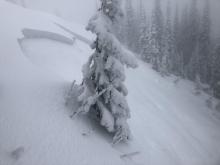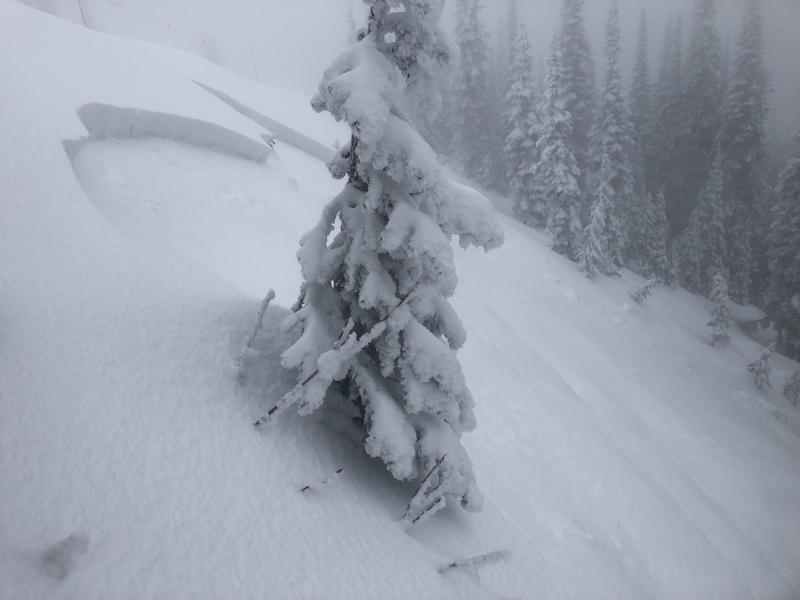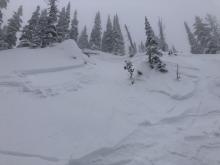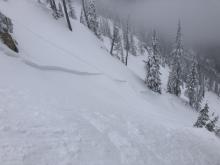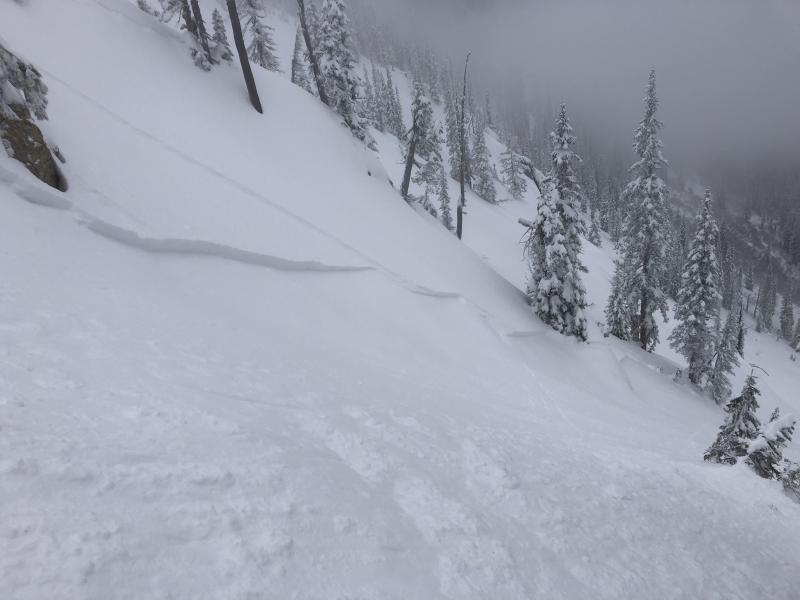| Thursday | Thursday Night | Friday | |
|---|---|---|---|
| Cloud Cover: | Mostly Cloudy | Overcast | Overcast |
| Temperatures: | 40 to 44 deg. F. | 26 to 31 deg. F. | 30 to 36 deg. F. |
| Wind Direction: | Southwest | Southwest | Northeast |
| Wind Speed: | 34G64 | 16G32 | 12G24 |
| Snowfall: | 0" to 2" in. | 3" to 5" in. | 4" to 5" in. |
| Snow Line: | 7500' | 5500' | 4500' |
Whitefish Range
Swan Range
Flathead Range and Glacier National Park
How to read the forecast
Unsettled weather will add layers of new snow to the mountains through this weekend. Watch for cracking in new and windblown snow on steep slopes at higher elevations. That’s where the new precipitation is most likely to accumulate on smooth surfaces, rather than bare ground, creating the possibility for slab avalanches. Carry rescue gear - shovel, beacon, probe - and travel with a good partner.

No Rating
?
Above 6500 ft.
No Rating
?
5000-6500 ft.
No Rating
?
3500-5000 ft.
-
Type ?
-
Aspect/Elevation ?

As freezing levels drop, and more precipitation falls as snow, it will cover the bare ground and bush exposed by recent warm temperatures. But on steep alpine slopes, this weekend’s storm will add a dense new layer over large areas of existing snow cover. Winds will shift to the northeast and may be enough to drift it into thicker slabs. Heavy snowfall that accumulates rapidly, especially on the downwind side of peaks and ridges, should cue you to watch for shooting cracks and recent avalanches, which will be the primary clues of instability. Slabs could be dangerous where they are more than six inches thick, or triggered from below.
Warm temperatures and rain over the past week have eaten away at the snow that fell earlier in October. Images from Logan Pass and Big Mountain summit on Thursday show wet snow and patches of mud. Weather stations at Tunnel Ridge and John Stevens Canyon lost around 50% of their recorded snow depth.
Friday will be wetter than Thursday, and just as windy. Snow will begin to pile up at all elevations as snow levels drop throughout the weekend. Cold temperatures will move in from the north on Saturday with increasing northeasterly winds. Drifting will become more likely and more widespread at upper elevations. The most favorable areas will be on southwest aspects, below ridges and in alpine chutes and bowls.
Snow levels come crashing down on Sunday, by which time Marias Pass is likely to get 8” of new snow. 12” or more are possible. The faster new snow accumulates onto a smooth, existing snow cover, the more likely you are to find storm instabilities. At lower elevations, stumps, logs, and rocks will become obstacles as they are covered by a new blanket of white. They may lurk in tracks and run-outs of avalanche paths, which will increase the consequences of getting caught.
FAC staff will continue to monitor conditions and post updates as conditions warrant. You can follow along using our handy Snowpack Tracker. We anticipate daily forecasts and full operations to begin in December. Your observations would be very helpful in the meantime.
Now is the time to tune up your avalanche knowledge. The 2020 Northern Rockies Snow and Avalanche Workshop will be held virtually from Nov. 12-14. The details are here and registration is open! Check out this winter’s avalanche safety course schedule and sign up for a class that fits your needs.
A complex weather pattern is on track for northwest Montana this weekend. Friday will be very wet and windy as low pressure digs down the Pacific coast. This system will suck arctic air over the divide beginning early Saturday. Northeast winds will be moderate to strong Saturday into Sunday. Snow levels will crash to valley floors by Sunday before the winds abate. A break in snowfall is expected until the middle of next week, though wintry temperature remain in place.
This forecast applies only to backcountry areas outside established ski area boundaries. The forecast describes general avalanche conditions and local variations always occur. This forecast expires at midnight on the posted day unless otherwise noted. The information in this forecast is provided by the USDA Forest Service who is solely responsible for its content.



